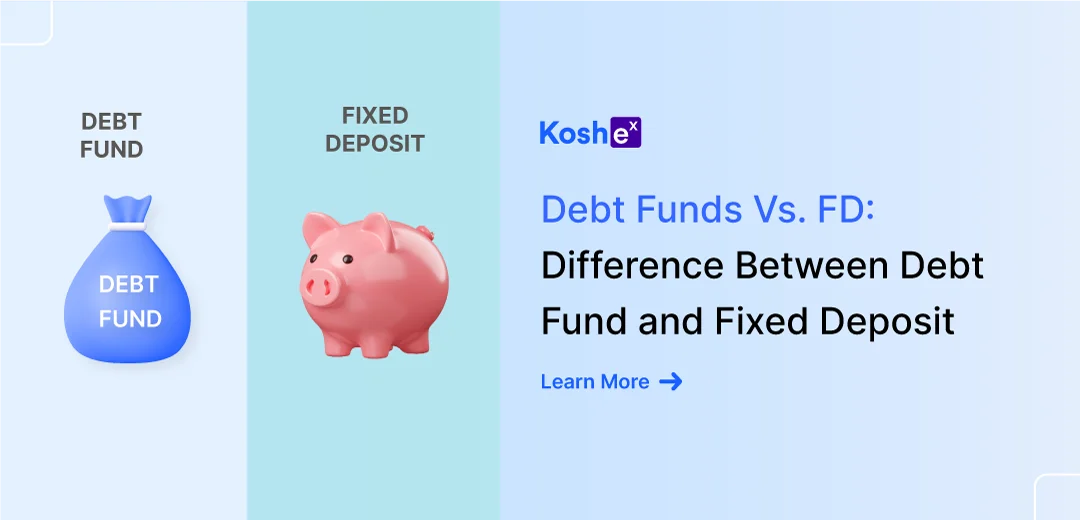In the vast and dynamic world of mutual funds, there’s a lesser-known financial instrument that can significantly impact investment strategies – TREPS, or Treasury Bills Repurchase Agreements. Mutual funds utilise TREPS to generate additional returns for their investors. By participating in TREPS, mutual funds can achieve higher yields, thereby boosting their Net Asset Value (NAV). A heightened NAV attracts more investors looking for potentially higher returns. This can eventually drive up the mutual fund’s share price.
In this blog, we will explain the concept of TREPS within mutual funds, how it works, its benefits, and more.
What Is TREPS?
TREPS, short for “Treasury Bills Repurchase Agreements,” is a financial instrument widely used in the money market, that allows investors to earn returns on their idle cash. In simple terms, it represents a short-term borrowing and lending arrangement between two parties – a borrower and a lender.
In a TREPS transaction, the borrower, often a mutual fund, pledges government securities, like Treasury Bills, with the lender (usually a bank or a financial institution) to borrow funds. The lender offers the funds to the borrower, and in return, the borrower agrees to repurchase the pledged securities at an agreed-upon future date and price, including an interest component. Since TREPS are backed by government securities, they are considered safe investments.
These transactions typically have short tenures, ranging from overnight to a few weeks. This makes them a valuable tool for managing temporary cash flow requirements. The Securities and Exchange Board of India (SEBI) requires mutual funds to allocate at least 5% of their liquid assets to TREPS.
Why Do Mutual Funds Invest In TREPS?
There are several reasons why mutual funds invest in TREPS and we are going to explore those reasons.
Liquidity Management – Mutual funds often face the challenge of maintaining sufficient liquidity to meet potential redemptions from investors. TREPS offer a convenient way to raise funds quickly by pledging their existing securities. This helps ensure the prompt processing of redemption requests.
Safety & Security – Due to the government backing of treasury bills, TREPS transactions are deemed highly secure. This minimises the risk of loss for mutual funds.
Short-Term Earnings – By investing idle cash in TREPS, mutual funds can earn additional income, boosting overall portfolio returns without significant risk.
Portfolio Diversification – TREPS adds another layer of diversification to a mutual fund’s portfolio. This reduces volatility and exposure to market fluctuations.
Regulatory Compliance – As with all investment activities, mutual funds must adhere to regulatory guidelines set by SEBI. Investing in TREPS allows them to manage their investments within these prescribed limits, ensuring compliance with regulatory requirements.
What Are The Benefits Of Investing In TREPS?
Higher Returns
Investing in TREPS can yield high returns for the mutual fund, increasing its Net Asset Value (NAV). A higher NAV often attracts investors willing to pay a premium for the potential of greater returns, thus boosting the mutual fund’s share price.
Low Risk
As TREPS typically involves government securities, they are considered low-risk investments. The backing of the government or high-quality corporate issuers lowers the risk of defeat. This makes TREPS a safe haven, especially in volatile market conditions. This safety feature is particularly appealing to conservative investors or those who are looking to balance out the riskier portions of
their portfolios.
Enhanced Liquidity
Since TREPS have a short tenure, they can be quickly converted into cash, making them an excellent tool for managing daily liquidity needs. Liquidity is crucial for mutual funds, especially in times of high redemption pressures. Hence, TREPS allow mutual funds to meet withdrawal demands without the need to liquidate longer-term investments that may incur higher costs or losses.
Risk Mitigation
TREPS investments contribute to portfolio risk reduction. By including this safe and liquid instrument, mutual funds can mitigate risks associated with other assets like corporate bonds or equities. This enhanced portfolio stability helps protect the mutual fund’s share price from the negative effects of market instability.
Operational Flexibility
TREPS transactions provide mutual funds operational flexibility, allowing them to manage their cash flows more effectively. This flexibility helps funds to quickly respond to market opportunities or liquidity needs by temporarily moving funds into or out of TREPS without significant impact on their strategic asset allocation.
Market Stability
By participating in TREPS, mutual funds contribute to the overall stability and efficiency of the financial markets. These transactions help maintain liquidity in the government securities market, which is beneficial for the broader economy and financial system.
Cost-Effectiveness
Compared to other short-term investment options, TREPS can be more cost-effective because of their low transaction costs and the competitive interest rates they offer. This cost-efficiency can contribute to higher net returns for the investors.
Meeting Regulatory Requirements
Mutual funds often have regulatory requirements related to liquidity ratios and cash holdings. Investing in TREPS can help funds meet these requirements by maintaining a portion of their portfolio in liquid. This compliance not only ensures regulatory adherence but also boosts the fund’s stability and resilience.
What Are The Challenges & Limitations Of TREPS?
While TREPS is a highly efficient instrument, it is not without its limitations:
- TREPS transactions are predominantly overnight or very short-term, making them unsuitable for medium- or long-term investments.
- When TREPS investments are significant in size and duration, they may constrain the mutual fund’s overall return potential. This perceived lower return potential can lead to a decline in the mutual fund’s share price as investors adjust their expectations accordingly.
TREPS In Mutual Funds – The Conclusion
TREPS, or Treasury Bills Repurchase Agreements, is a critical component in the money market segment of mutual funds. They provide a blend of liquidity, safety, and income generation.
As mutual fund investors, understanding TREPS can help you appreciate the mechanisms that go into ensuring your investments are managed efficiently. With its low-risk profile and regulatory alignment, TREPS remains a cornerstone of liquidity management in India’s financial markets.
Frequently Asked Questions (FAQs)
Can TREPS be used for long-term investments?
No. TREPS is designed for short-term liquidity management and is not suitable for medium- or long-term investments,
What is the role of CCIL in TREPS?
The Clearing Corporation of India Limited (CCIL) acts as an intermediary in TREPS transactions, ensuring the safety and efficiency of trades.
How do fund managers use TREPS?
Fund managers use TREPS to park surplus cash temporarily, making sure liquidity is maintained while earning low-risk returns on the idle funds.









Leave a Comment